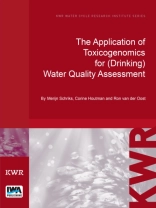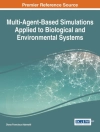Available as e Book only. Due to anthropogenic activities, freshwater systems worldwide are exposed to thousands of compounds. Monitoring of priority pollutants is important, however, monitoring of all individual compounds would be practically impossible. Moreover, the effects on human health remains mostly unknown since compound toxicity data is often absent. With the release of increasing amounts of new (emerging) chemicals into the environment, new monitoring strategies are required to assess the effects of (drinking water relevant) chemicals on human health. Therefore, sensitive in-vitro bioassays have been developed which focus on specific physiological effects such as endocrine disruption or mutagenicity. The advantages of bioassays are that they directly determine the effect of (an entire mixture of) compounds present in an environmental sample instead of identifying single compounds. These bioassays are able to detect known and unknown compounds as long as they trigger the bioassay response. However, a disadvantage of applying these assays may be that they each focus on a (relatively narrow selection of) specific physiological endpoint and that the human relevance is often obscure. The evolution of new technologies and the recent advances in the knowledge on DNA sequences and organisation (i.e. genomics) have enabled the development of new holistic tools, such as DNA microarrays. This report provides an overview of innovative omic methods and the mechanisms behind certain genomics technologies are explained. The main focus is on the potential application of DNA microarrays that are able to measure the impact of toxic substances on gene expression, i.e. transcription of DNA to m RNA (transcriptomics). Practical information on this method, such as sensitivity, analysis time, responsiveness, specificity, etc. is discussed. An overview is presented of the potential applications of this technology with regard to water quality assessment. In addition, the limitations and challenges that need to be overcome are discussed. The following potential applications for genomics in water quality assessment are foreseen: Prediction of the toxicity of compounds that are newly detected in aquatic samples and of which possible toxic properties and MOA are unknown. Environmental monitoring of toxic pressure at locations relevant for the water sector, such as drinking water intake locations. For this purpose, the No Observed Transcriptional Level (NOTEL) concept is a helpful concept to mutually compare different sites. Pre-screening of chemicals or locations for relevant toxicological effects, which can be investigated in more depth with specific bioassays.
Corine Houtman & Ron van der Oost
Application of Toxicogenomics for (Drinking) Water Quality Assessment [PDF ebook]
Application of Toxicogenomics for (Drinking) Water Quality Assessment [PDF ebook]
Beli ebook ini dan dapatkan 1 lagi GRATIS!
Bahasa Inggris ● Format PDF ● ISBN 9781780406671 ● Penerbit IWA Publishing ● Diterbitkan 2014 ● Diunduh 3 kali ● Mata uang EUR ● ID 3356613 ● Perlindungan salinan Adobe DRM
Membutuhkan pembaca ebook yang mampu DRM












